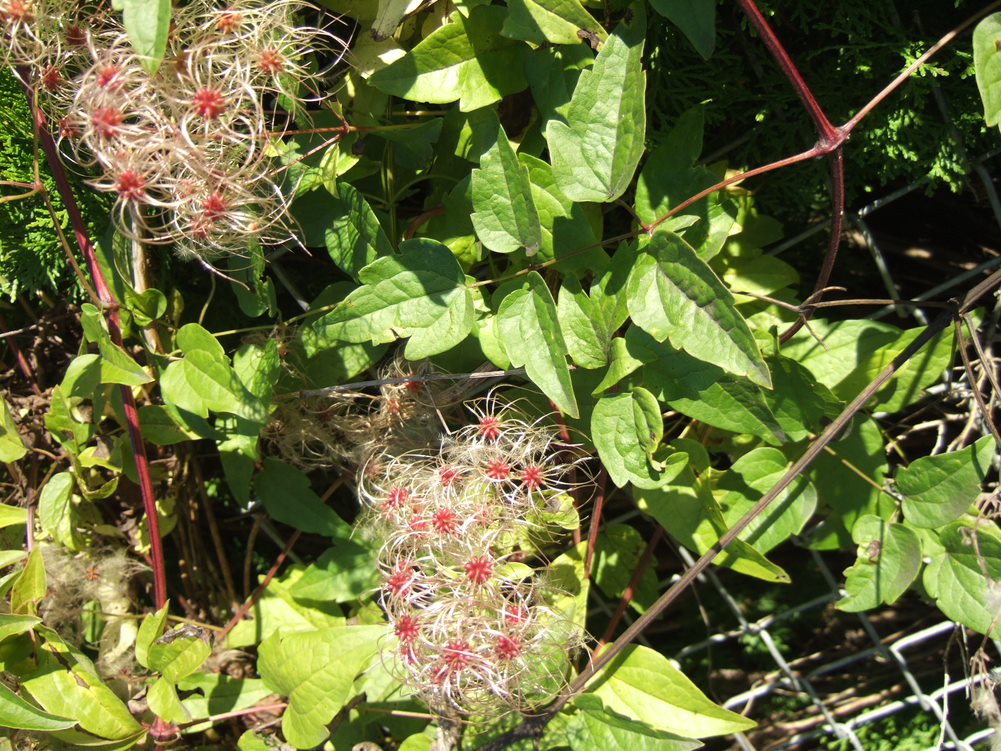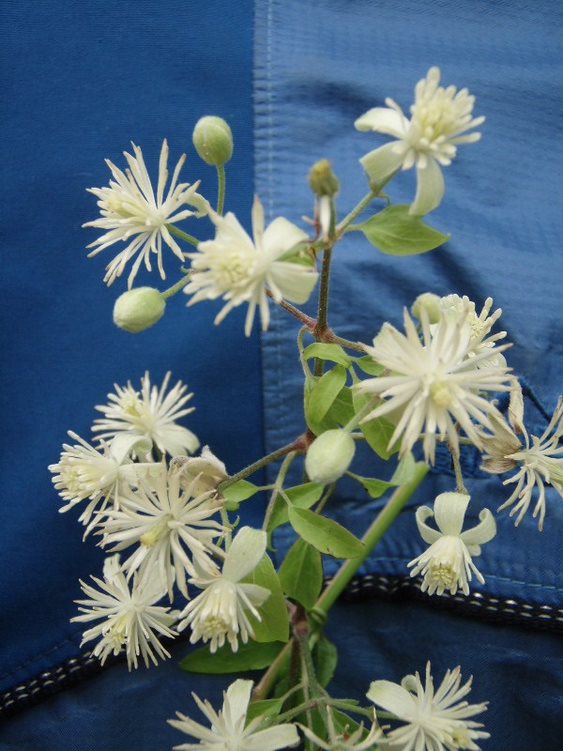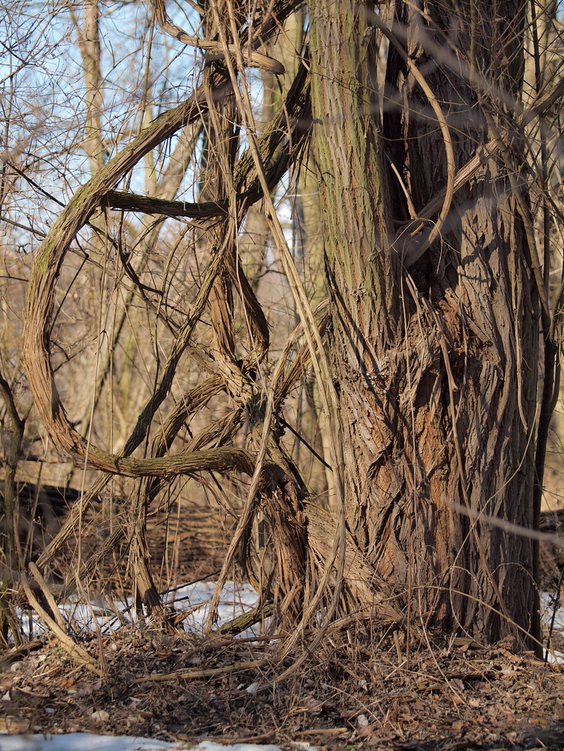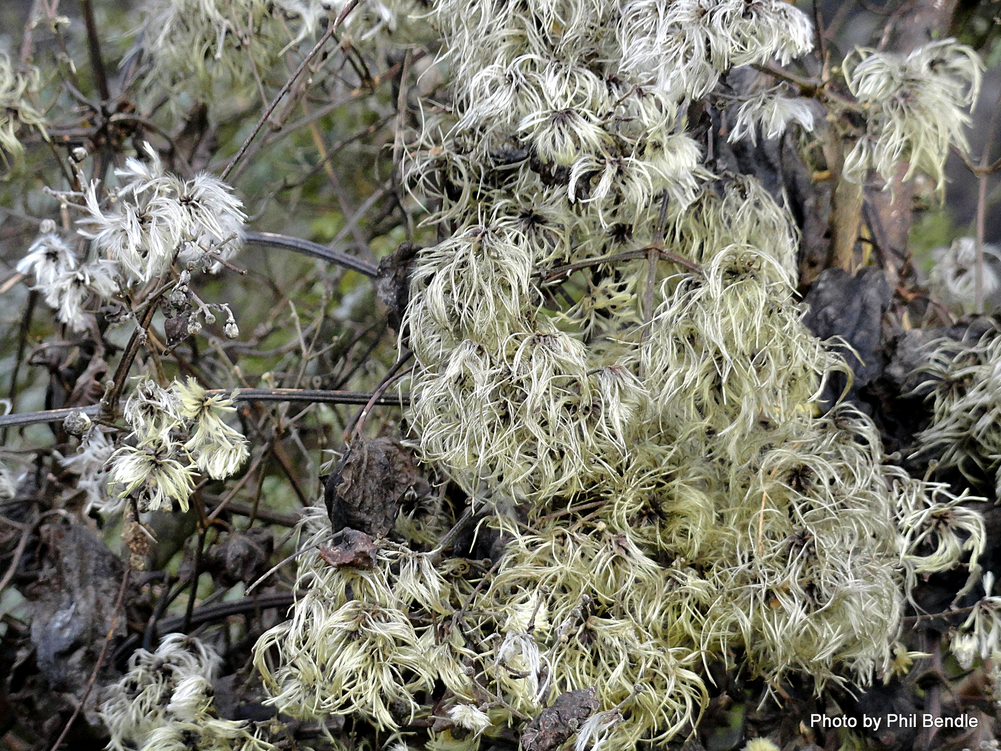Old man's beard identification and control
Information about the noxious weed old man’s beard. Old man’s beard is also known by its Latin name, Clematis vitalba.
About this weed
Old man’s beard is a non-regulated Class C noxious weed. This means due to how widespread it is, property owners are not required to control this species on their property, though it is encouraged.
Old man’s beard, known as Clematis vitalba, is in the buttercup family. It is also commonly known as traveler’s joy.

Why it's a problem
Old man’s beard is a noxious weed because it spreads aggressively and its woody vines can grow up to 100 feet long, blanketing trees and other plants. Like other invasive vines, old man’s beard creates shade around trees and bushes that prevent them from getting sunlight.
Vines hold a lot of water and old man's beard vines become woody and extremely heavy. Their weight eventually kills the supporting trees and bushes.
Old man’s beard is particularly problematic because unlike many invasive vines, once it reaches the tree top it is able to climb back down and even re-root. This adds significant weight and blocks out light and air.
Control is recommended but not required for this plant, as it is widespread.
Plant description
Old man's beard is native to Europe, Asia, and parts of Africa. It was introduced to San Juan County as an ornamental in 1904. It is now widespread in western Washington.
Old man’s beard is a woody climbing vine that can grow up to 100 feet long and can also act as a ground cover in absence of trees to climb. Its vine is identifiable year-round. Young vines have longitudinal ridges, and older vines have shredding bark.
Each leaf is composed of 5 leaflets, that can be smooth or toothed on the edges.
Small, creamy white flowers appear in clusters in late summer.
Its name comes from the feathery seed heads that form in the fall that from a distance resemble a long white beard. Seed heads are especially visible in winter when the leaves have died back.
Old man’s beard reproduces by seed (each plant can produce 100,000 or more every year) and via fragments. Vine fragments can take root and form new plants.
Winter is a good time to identify this plant as its fluffy beard-like seed heads remain long after leaves fall off.






Be aware of look-alike plants
Old man’s beard can be confused with our native western white clematis. In general, the native clematis is found east of the Cascade mountains, while old man’s beard is very common on the west side of the mountains. One way to tell the introduced clematis from the native is to look at the length of the plants. Native clematis grows to about 20 feet (6 meters) long, whereas old man’s beard can grow more than to 90 feet (30 meters) long.
Old man’s beard is also often confused with:
When in doubt, take photos and report them on iNaturalist.
What to do if you find it
While landowners are not required to control old man’s beard, the King County Noxious Weed Control Board recognizes this plant as invasive. The Board encourages landowners to remove it when possible and to choose different vines for their landscaping needs.
Control methods
We recommend using a combination of methods to control weeds. In areas with few weeds, it is important to act quickly before they become harder to control. Make a long-term plan as it often takes several years to get rid of most weeds. Start in the least infested areas first and then move into more heavily infested areas.
Manual control
For vines growing on the ground, pull or dig out plants and roots.
For vines growing in trees, the key is separating the climbing vines from their roots. Clematis can only grow from roots in soil (it cannot root itself to tree bark). Cut and remove all vines to a comfortable height around the trunk of the tree. This will kill the upper vines; the lower vines will need to be pulled off the tree and pulled out of the ground.
Old man’s beard vines branch extensively and may grow up into trees and then back down again. Any stem fragments left behind may continue to grow, and plants will re-grow from any roots left in the ground. Manual control of large infestations can take a lot of time and labor.
Chemical control
Stay safe when using herbicide:
- Always read the label before use.
- Wear a long-sleeved shirt, long pants, shoes, and eye protection.
- Follow state and local regulations.
Foliar, broadleaf herbicides are effective on actively growing plants in the spring before flowering and seed set in the fall. Glyphosate is effective. Triclopyr works and is better if you are treating near grass that you do not want to kill.
Avoid spraying where there is a chance that herbicide will enter a waterway or wetland unless you are using a state-approved aquatic herbicide and have the required permits and licenses to do so. Use of pesticides in water is regulated in Washington state. See Washington Department of Ecology Aquatic Pesticide Permits for details.
Disposal instructions
You can suspend non-flowering stems above ground or pile them on tarps and leave them to dry out. Make sure the stems are not touching the ground. You can also dispose of plants in yard waste or taken to a transfer station.
Noxious Weed Disposal - Washington State Noxious Weed Control Board

 Translate
Translate